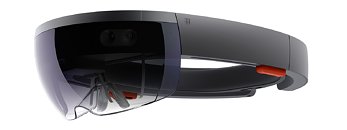Raevenlord
News Editor
- Joined
- Aug 12, 2016
- Messages
- 3,755 (1.16/day)
- Location
- Portugal
| System Name | The Ryzening |
|---|---|
| Processor | AMD Ryzen 9 5900X |
| Motherboard | MSI X570 MAG TOMAHAWK |
| Cooling | Lian Li Galahad 360mm AIO |
| Memory | 32 GB G.Skill Trident Z F4-3733 (4x 8 GB) |
| Video Card(s) | Gigabyte RTX 3070 Ti |
| Storage | Boot: Transcend MTE220S 2TB, Kintson A2000 1TB, Seagate Firewolf Pro 14 TB |
| Display(s) | Acer Nitro VG270UP (1440p 144 Hz IPS) |
| Case | Lian Li O11DX Dynamic White |
| Audio Device(s) | iFi Audio Zen DAC |
| Power Supply | Seasonic Focus+ 750 W |
| Mouse | Cooler Master Masterkeys Lite L |
| Keyboard | Cooler Master Masterkeys Lite L |
| Software | Windows 10 x64 |
The Video Electronics Standards Association (VESA) has recently announced plans to form a special working group within its ecosystem, whose mission will be to develop standards for XR (eXtended Reality) products and development. XR envelops both VR (Virtual Reality) and AR (Augmented Reality), and VESA has apparently had enough of differing vendor implementations. According to VESA, "the lack of standardization is causing compatibility issues between products from different vendors, as well as increasing the complexity and cost of development, ownership and replacement. Lack of compatibility can also create confusion for end users and impede broader acceptance of AR/VR products."
Considering the XR market's value is expected to hit roughly $162 billion dollars by 2020, we can certainly see how "compatibility issues" and "lower acceptance of AR/VR products" could affect what is looking to be an extremely lucrative market. Let's just gloss over the fact (slightly paradoxical, actually) that we're now looking at two different XR standards groups, VESA's newly-announced initiative, and Khrono's OpenXR.



However, while OpenXR is focused mainly on software, VESA wants its working group to look beyond the software to bolster hardware compatibility. OpenXR, for one, aims to create a standard API that interfaces with all hardware APIs and takes the extra work out of the equation for developers. It looks like the implementation of a high-level API, in essence - a common programming interface that allows developers to basically "ignore" vendor and device-specifics, potentially trading higher performance for simplicity of programming. VESA, however, will take a distinct approach, with some considerations regarding software, but is mainly preoccupied with hardware compatibility (which is in-line with their work on DisplayPort, Embedded DisplayPort, the Extended Display Identification Data standards as well as the DisplayID extension.
VESA states its missions as such:
The company further added that this special interest group is open to members and non-members alike, so, perhaps we'll see some of the giants behind OpenXR (like Samsung, Google, AMD, ARM, and NVIDIA, just to name a few) behind this new standards initiative. Let's just hope these two groups don't find their work overlapping. It would be a shame to see something like AMD's FreeSync and NVIDIA's G-SYNC happen all over again.
View at TechPowerUp Main Site
Considering the XR market's value is expected to hit roughly $162 billion dollars by 2020, we can certainly see how "compatibility issues" and "lower acceptance of AR/VR products" could affect what is looking to be an extremely lucrative market. Let's just gloss over the fact (slightly paradoxical, actually) that we're now looking at two different XR standards groups, VESA's newly-announced initiative, and Khrono's OpenXR.



However, while OpenXR is focused mainly on software, VESA wants its working group to look beyond the software to bolster hardware compatibility. OpenXR, for one, aims to create a standard API that interfaces with all hardware APIs and takes the extra work out of the equation for developers. It looks like the implementation of a high-level API, in essence - a common programming interface that allows developers to basically "ignore" vendor and device-specifics, potentially trading higher performance for simplicity of programming. VESA, however, will take a distinct approach, with some considerations regarding software, but is mainly preoccupied with hardware compatibility (which is in-line with their work on DisplayPort, Embedded DisplayPort, the Extended Display Identification Data standards as well as the DisplayID extension.
VESA states its missions as such:
- Establish the hierarchical structure for AR/VR services, including physical connections, data transfer protocols, software drivers and application layers
- Define the basic communication data structure and communication channel between the source and sink devices
- Study the related technologies and algorithms, and standardize them to enable economic and efficient implementation
- Suggest any changes to existing VESA standards that may be needed for better AR/VR support
The company further added that this special interest group is open to members and non-members alike, so, perhaps we'll see some of the giants behind OpenXR (like Samsung, Google, AMD, ARM, and NVIDIA, just to name a few) behind this new standards initiative. Let's just hope these two groups don't find their work overlapping. It would be a shame to see something like AMD's FreeSync and NVIDIA's G-SYNC happen all over again.
View at TechPowerUp Main Site




 )))
)))
